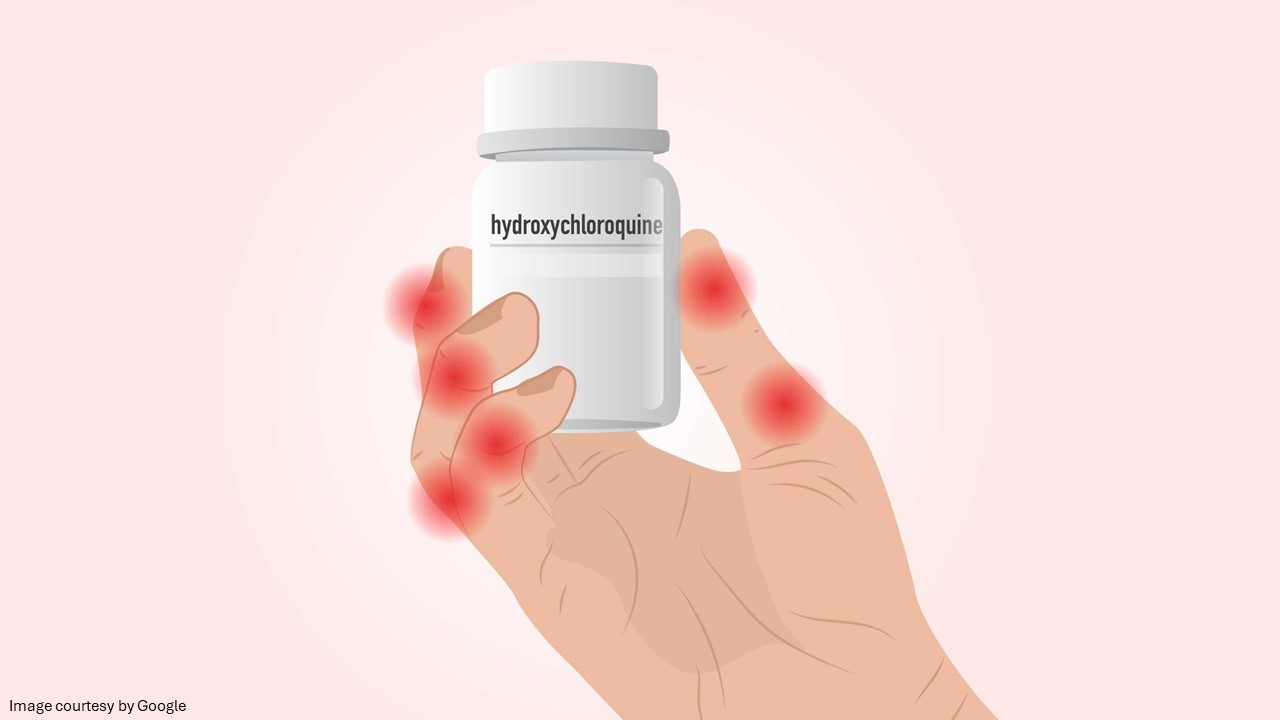Plaquenil 200 mg contains Hydroxychloroquine that treats rheumatoid arthritis and other inflammatory conditions such as systemic lupus erythematosus. Hydroxychloroquine is also an antimalarial medication that prevents and treats malaria and other parasitic infections. It is not used regularly for this purpose because of parasite resistance. It is not clearly understood how HCQ 200 mg works in treating inflammatory conditions; however, it is believed to have a mode of action on the immune system. In patients with rheumatoid arthritis, this action helps to reduce inflammation and thus decrease pain and swelling. It also reduces damage to the joints and helps to prevent disability in the long term. Because the HCQ 200 tab reduces joint damage rather than relieves the pain.
Benefits you expect from Hydroxychloroquine treatment
About 60% of people treated with Plaquenil have been reported to experience improvement in their condition. Hydroxychloroquine does not work right away. It may take up to 8 to 12 weeks for symptoms to begin to improve for treating rheumatoid arthritis. The complete effects of treatment may take up to 26 weeks. Other medications may be given to improve your symptoms while waiting for Plaquenil to work.
Dose and method of administration
Plaquenil 200mg is taken orally in the form of a tablet. It is best taken with food as it has a slightly better taste. Hydroxychloroquine is not a painkiller drug, and it should be taken continuously to be effective.
Rheumatoid Arthritis
Hydroxychloroquine Plaquenil will require several weeks to induce its beneficial therapeutic effects, whereas minor side effects may occur relatively early. Several months of treatment may be required before maximum effects can be achieved. Other medications may be required to treat the pain. Find the dosage methods:
-
- Initial dosage: In adults, a recommended dosage is 400 to 600 mg daily, preferably at meal times. In a few patients, the adverse effects may require a temporary initial dosage reduction. Generally, after five to ten days, the dosage may be increased to the optimum response level, frequently without the recurrence of side effects.
- Maintenance dosage: When a positive response is obtained, the dose can be reduced to 200 to 400 mg daily and continued as maintenance treatment. The recommended minimum effective maintenance dose should be fixed. The incidence of retinopathy has been reported to be higher when the maintenance dose is exceeded. The medicine should be discontinued if a patient doesn’t notice reduced joint swelling or increased mobility within six months. If a relapse occurs after treatment withdrawal, treatment may be resumed on an intermittent schedule if there are no ocular contraindications. Safe usage of these medications for juvenile rheumatoid arthritis has not been established.
- Use in combination treatment: Plaquenil may be used safely and effectively with corticosteroids, NSAIDs, methotrexate, salicylates, and other second-line therapeutic agents. Salicylates and corticosteroids are generally decreased gradually in dosage or eliminated after the medication has been used for several weeks. When gradual reduction of steroid reduction dosage is recommended, it may be done by decreasing it every four to five days. Treatment regimens using medications other than corticosteroids and NSAIDs are under development.

- Lupus Erythematosus: In mild and discoid cases, Plaquenil for lupus is the first line of treatment. The dosage usually depends on the disease’s severity and the patient’s response to treatment. An initial dosage of 400 to 800 mg per day is recommended for adults. This level can be maintained for several weeks and then decreased to a maintenance dose of 200 to 400 mg once a day.
- Malaria: Plaquenil is effective as a suppressive agent in patients with malaria, in terminating acute attacks and significantly lengthening the interval between relapse and treatment. In patients with malaria, it abolishes the acute attack and provides a complete cure for the infection.
- For children, the dosage is calculated based on body weight.
Hydroxychloroquine HCQ Side effects:
You might develop side effects with HCQ Plaquenil treatment. Inform your healthcare provider if you are concerned about the possible side effects of Plaquenil. A reduction in dosage may minimize the adverse effects of Plaquenil so that you continue to take this medication. Your healthcare provider will advise you on any required dose changes.
The most common side effects of Plaquenil:
Some people using Plaquenil generic experience stomach and bowel side effects such as nausea, diarrhea, or loss of appetite. As the medication is slightly bitter, these problems can often be reduced by taking the pills with food or milk, or they may improve as time passes.
Some less common side effects of Plaquernil include skin rashes and increased sensitivity to the sun. It is best to wear sunscreen and protective clothing when in the sun. The medicine rarely worsens psoriasis rash. Plaquenil rarely causes increased skin pigmentation. For more information on the side effects of plaquenil for lupus.
Purchasing Plaquenil online
Buy Plaquenil online from alldaychemist.com and save up to 10%. See the website for information on Plaquenil uses, precautions, side effects, and FAQs. Don’t buy Plaquenil without a prescription; make sure you receive a prescription from your doctor first and then buy Plaquenil.
admin
Latest posts by admin (see all)
- Why Azelaic Acid should be your next skincare upgrade? - December 6, 2025
- Sildenafil Jelly – A Faster-Acting Alternative to Traditional ED Tablet - August 22, 2025
- Not Just Thirsty: Surprising Signs Your Body Is Dehydrated - August 8, 2025



